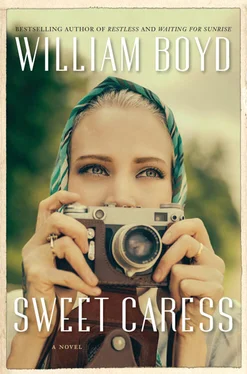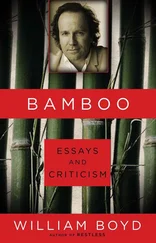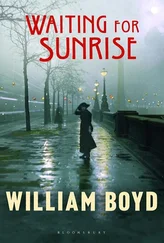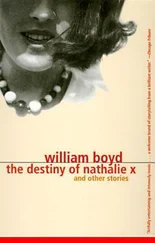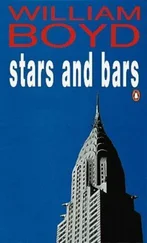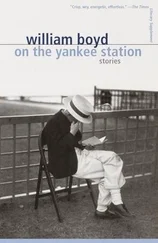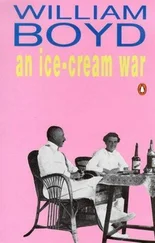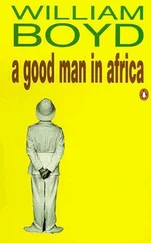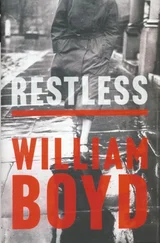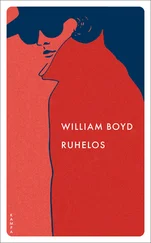Benedicta was a bustling little dynamo of energy, blonde, chatty and knowing. She didn’t like me at all, even though I had had nothing to do with her divorce from Sholto. But because I was the new, slightly younger wife she decided to blame me for the collapse of her marriage — illogically, perversely. What could I do about that? I didn’t care and as I didn’t warm to her I tried to keep out of her way as best I could.
After the funeral everyone returned to the house for drinks and canapés and she cornered me there, all affable concern.
‘This is going to hit Sholto hard,’ she said, dolefully.
‘I don’t think it will,’ I said. ‘He and Dilys weren’t that close.’
‘Just make sure the door to the cellar is locked.’
‘I don’t know what you’re talking about,’ I said.
‘How are you coping, generally?’
‘With the children?’
‘With Sholto?’
‘We’re very happy. Very, very, very happy. Thank you for asking, Benedicta. Very happy indeed.’
But Sholto, as if to confirm Benedicta’s snide malice, became very drunk that night — as drunk as I’d ever seen him. After everyone had gone I found him sitting staring at the fire in the small drawing room, a tumbler full of whisky in his hand — half a pint of whisky. I took it from him but he was already incoherent, slurring his words. He lurched to his feet and tried to kiss me and I pushed him off, angry.
‘Look at yourself,’ I hissed. ‘Disgusting!’ And stalked away, hating myself almost instantly because I knew I had sounded and behaved exactly as loathsome Benedicta would.
I remember how we used to drink in those days. Never gave it a passing thought. Gin at lunch — two or maybe three glasses with soda and Angostura bitters. A few whiskies before dinner and then wine. Sholto didn’t sleep well so he’d take a slug of chloral before he went to bed that knocked him out until morning. And we smoked from breakfast onwards. We didn’t care, we were happy, the little girls running around, and Sholto, it seemed to me, took great joy in his surprising new family. We went fishing in lochans up on Beinn Lurig; we took a boat out to Skye and the Hebrides; we spent several weekends a year at the London mews house; we all went on a holiday to Rome in ’55 before the girls went off to boarding school. Of course there were problems, mainly financial, that meant one of the farms had to be sold, and the two flats in Edinburgh, but the House of Farr — crumbling, damp, cold in the winter — was a real home, a place of good cheer, especially now that bitter Dowager Dilys had gone for good. I started repainting her suite of rooms, buying new rugs and curtains. Yes, we were happy, then.
I remember that the one aspect of my new life that I vaguely resented was that I stopped being a photographer. I took photographs, of course — family snapshots — but it wasn’t the same: it was as if some part of my being had been sloughed off, now I was married, a wife and a mother, running the big house. The old Amory Clay had disappeared, drifted away.
I kept my cameras in a locked cupboard, wrapped in chamois leather and sealed in plastic bags. I would take them out from time to time, like an old gunslinger nostalgic for the feel of his weapons, wanting to savour the weight and contours of his six-guns, make sure they were in working order.
Amongst the few pictures I did take some were in colour — Kodachrome slides, expensive but becoming the norm. However, even as I could see my pictures reflected the world as it was I somehow wanted the world as it wasn’t — in monochrome. That was my medium, I knew, and in fact I came to feel it so strongly I wondered if, as the world turned to colour photography, something vital was being lost. The black and white image was, in some essential way, photography’s defining feature — that was where its power lay and colour diminished its artfulness: paradoxically, monochrome — because it was so evidently unnatural — was what made a photograph work best.
I would carefully rewrap my cameras — my Leica, my Rollei, my Voigtländer — and place them back on their shelf in the cupboard and, as I locked the door on them, I wondered if I’d ever be a proper photographer again.
I remember Hanna came to stay. Elegant, mannish again, her short hair dyed a white-blonde. How she turned heads in Mallaig! However, the strange and troubling aspect of her visit was the antipathy that sprang up between her and Blythe. The twins were six years old at the time and I remember Blythe came to me one day and said, ‘Mummy, I want Hanna to go away.’
‘Why, darling? Hanna’s my friend.’
‘I don’t like her, I want her to go.’
‘I want — gets nothing. Don’t be silly. Run along.’
A day later Hanna confided in me.
‘Is everything all right with Blythe?’
‘Of course. What’s happened?’
‘I was walking yesterday down by the river and someone threw stones at me. It was Blythe. When I went up to her she shouted, “Go away!”’
‘She’s just a little girl — she gets these silly ideas. I’ll talk to her.’
Hanna shrugged. ‘See how she looks at me. Look at lunchtime today. She hates me.’
I did look and I saw Blythe staring down the table at Hanna with a ferocity that I found alarming. I took her aside after lunch and asked her if she’d thrown stones at Hanna. She denied it, vehemently, so I sent her to her room with no supper.
But I was troubled. As your children grow up and become small, thinking people you would be a fool to deny that, like the rest of the human race, they begin to develop their distinct personalities — and there’s very little at all you can do about it. Little Johnny can be shy or stupid, or funny or odd, or carefree or cruel, or duplicitous or guileless. I could see from quite early on in their lives how Annie and Blythe were becoming entirely different people. Annie was sweet, helpful — life was fun, to be enjoyed to the full. Blythe was cleverer, quicker on the uptake, but had dark destructive moods and had a stubborn streak that was almost pathological. When Hanna finally left after her ten days it was as if Blythe had triumphed, somehow. It sounds odd to say this about a six-year-old but for a couple of days her mood was elated, arrogant, and she swaggered about the house, almost insufferable.
I mentioned this behaviour to Sholto but he said he hadn’t noticed anything out of the ordinary.
Something Benedicta said stayed with me: ‘Just make sure the door to the cellar is locked.’ We had a large cellar at Farr where we stored wine and other alcohol and all manner of detritus from the house’s past. It was Sholto’s domain — he kept the house’s drink supply stocked; he did all the ordering from Naismith & McFee Ltd, the big general grocer in Oban. Their olive-green vans were a regular sight in the House of Farr’s driveway — we bought almost all our provisions from them. Mrs Dalmire would phone in the order and the next day a van would appear.

The twins, Blythe and Annie, 1953.
I went down to the cellar and found the door locked. I asked Peter Dalmire for the key and he told me it was kept in His Lordship’s gunroom on its own hook. Peter showed me where it was hung and I explored the cellar. We had an enormous supply of booze, it seemed to me, doing a swift inventory — six cases of gin, ten of whisky, both blended and malt, several hundred bottles of wine, not to mention beer, vermouths, sherry and the like. I counted the bottles of gin and whisky and a week later counted them again, calculating that in those seven days the household at Farr had downed two bottles of gin and four bottles of whisky. There had been two visits from friends passing by but that didn’t explain the amount. I knew how much I had drunk — the usual lunchtime and pre-dinner glass or three — and realised with something of a shock that all the rest had effectively been consumed by Sholto.
Читать дальше
